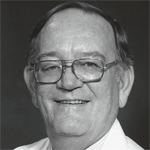
John R. Ward, MD
Mr. Shields notes that from the 1950s through the 1970s, passiveness in patients remained. His group of collaborative healthcare professionals wanted to change that. “The thing we were most interested in was making sure patients got out of the mold of having things done to them. We aimed to advise, counsel and help our patients, and part of that was empowering them to play an active role. They were the ones living with rheumatic diseases each day, and we felt strongly they needed to learn how to manage them.”
With that, Mr. Shields’ mindset shifted from therapist to teacher—giving patients the tools to manage their diseases and the impact those diseases had on their lives.
“We began educating patients to play an active role on their care teams. There was, and is, no cure for rheumatic diseases, but there were, and are, a lot of things that could be a benefit if professionals work together and teach the patients to become active participants, not passive recipients of the treatment,” Mr. Shields explains.
Advocating for New Ideas: A Presidential Focus
With change comes the need for more change. And collaborative care was no exception. As Mr. Shields became more involved in the rheumatology community, he also became an advocate for his patients and profession.
With health professionals actively participating in the creation—not just implementation—of care plans, there was a need to influence payment systems. At the time, payment was received only when health professionals implemented a treatment directed by a physician. This didn’t leave any room for reimbursement for the work of forward-thinking care teams that were operating as a cohesive unit.
“We reached out to the Arthritis Foundation and other physicians and health professionals who wanted similar care teams and started working toward this as a common goal,” explains Mr. Shields. “We wanted to influence other professionals. And by getting them together, we could influence the payers to realize that we would provide better care for patients at a lower cost if we all worked together,” he says.
This continued to influence Mr. Shields in his role as ARHP president from 1972–74, when he continued to work on the concept of collaborative care teams with empowered patients. “I really got my first glimpse of collaborative care in the 1950s and began championing the patient as a part of that team shortly thereafter.”



